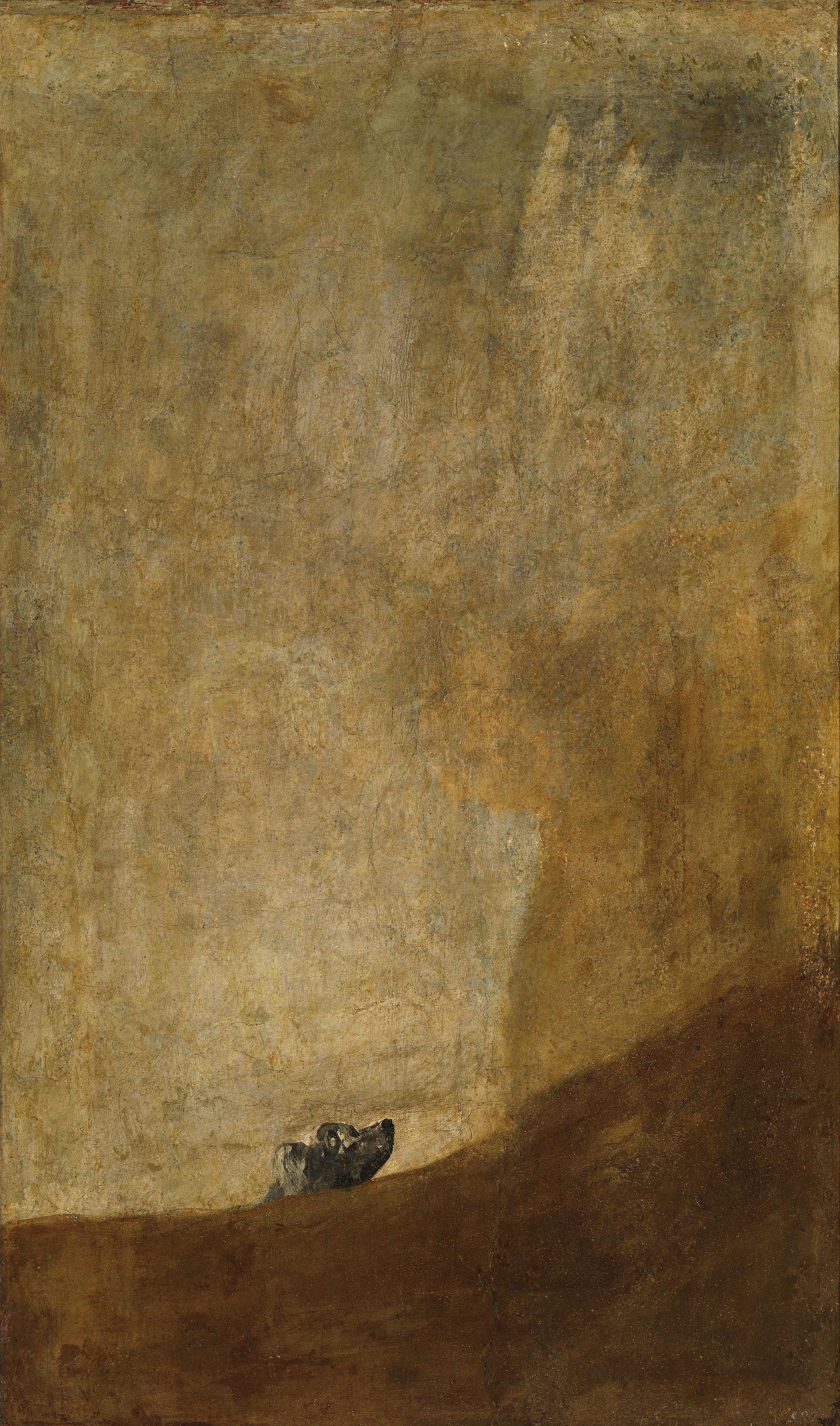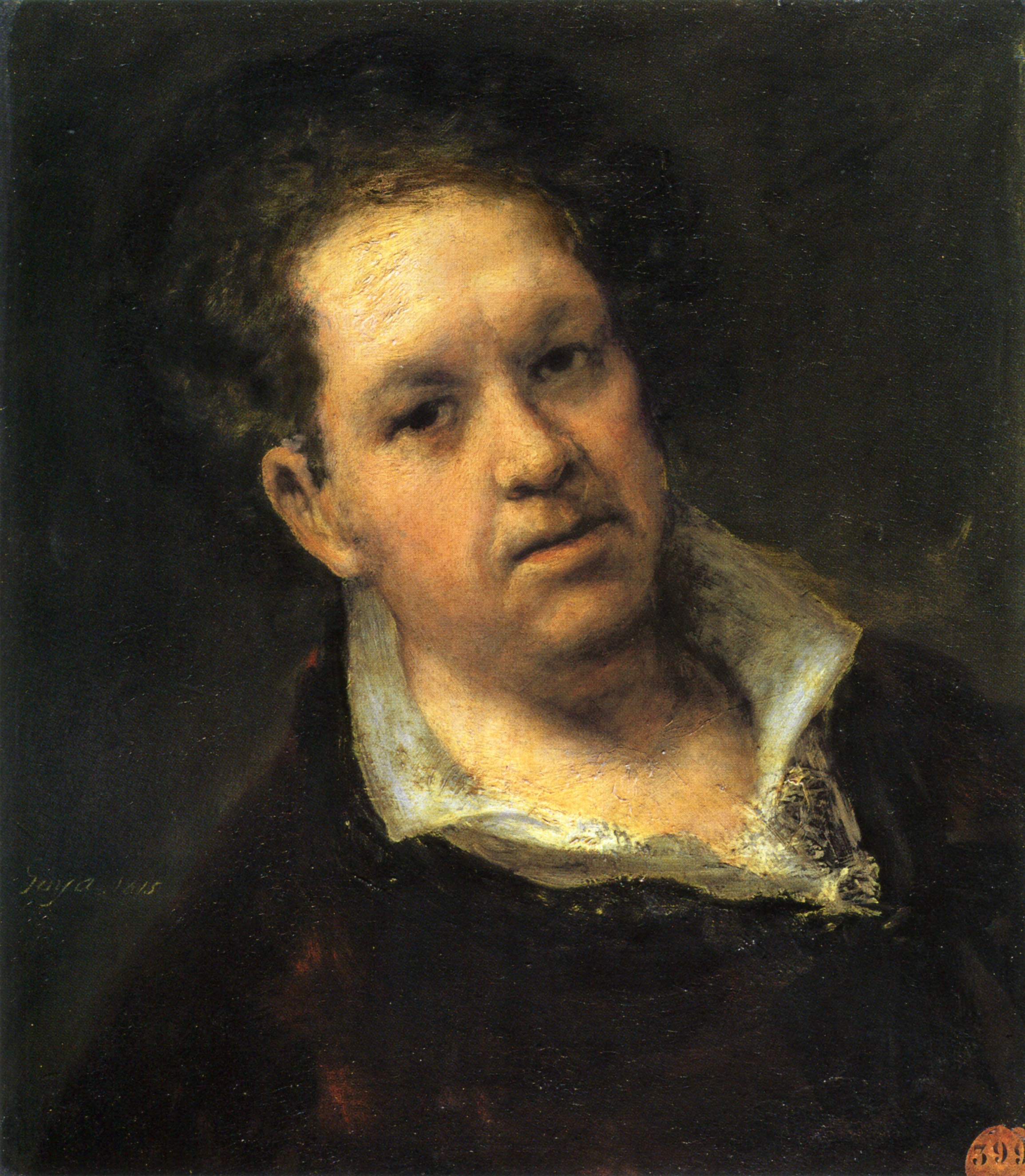Described by Antonio Saura as “the world’s most beautiful picture,” Francisco Goya’s The Dog was painted directly onto the wall of the Spanish painter's home in the waning years of his life as he was suffering from both mental and physical despair.
This painting shows a dog’s head with the snout pointed upwards, ears pinned backwards, and wide eyes gazing toward the sky. The painting can be divided into two sections, one a dark mass that conceals the dog’s entire body, possibly earth or quicksand. The second section, a vast sky which conveys the loneliness of the dog and is highlighted by a large black mass, most likely an original painting that was on the wall before Goya decided it must be painted over.
The true meaning of the painting will never be known, no writings were found, it was never spoken of, and it would make perfect sense that Goya never intended for anyone to ever see this painting. The dog being buried represents his feeling of being trapped, old and alone, physically and mentally weak. With his demise near, all that could be done was look up to the heavens waiting for some divine intervention that never came. The hopelessness is palpable.
The Dog is without a doubt visually the least haunting of the Black Paintings, all of which are on display at the Museo del Prado in Madrid.
- Adam G. Oestreich
P.S. Read why Francisco Goya is considered to be the first modernist.


 Francisco Goya
Francisco Goya